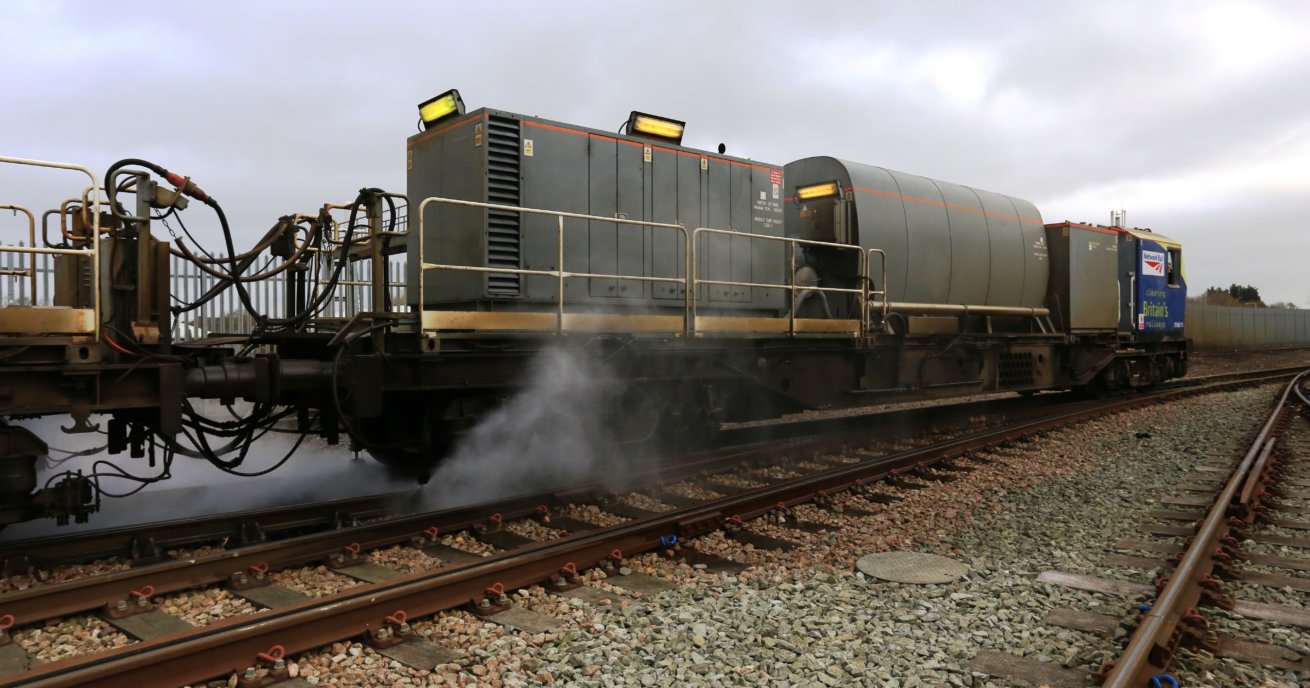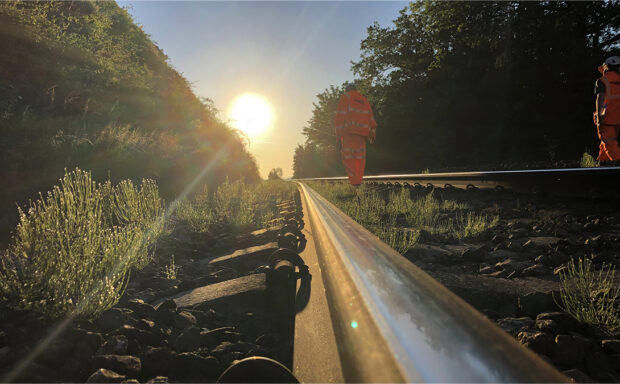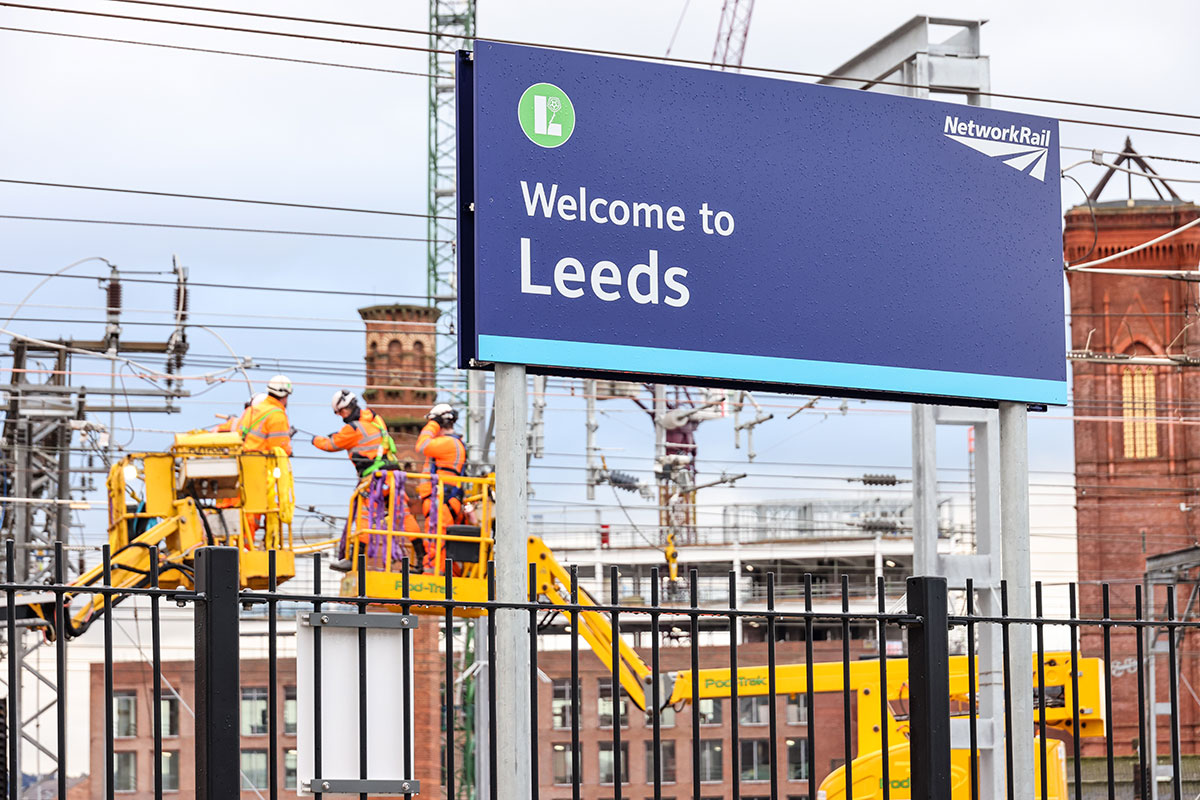With temperatures dropping and the nights drawing in, we’re using a dedicated fleet to tackle leaves on the line.
There are more than 13 million trees on and next to the railway in Britain. This means thousands of tonnes of leaves fall on the railway each autumn so we’re doing everything we can to reduce delays and get you home safely and on time.
Regarded as the railway’s equivalent of black ice on the roads, leaves on the line can create issues when they stick to damp rails. Moving trains compress them into a thin, black layer that can affect train braking and acceleration.
The build up of leaf mulch can also make it harder for signallers to detect a train’s location, causing delays to your journeys.
That is why we and train operators are working flat out this autumn. For example, we’re preparing specialist equipment, undertaking specialist driver training and ensuring teams are on standby 24/7 to help keep services running safely and smoothly.
See our specialist kit in action:
Disruption prevention
Leaves on the line are much like black ice on the roads because they can affect train braking and acceleration.
This means train drivers must slow down earlier for stations and signals to avoid overshooting them. They must also accelerate more gently to avoid wheel spin. All this can increase journey time and lead to delays.
Build-up of leaf mulch can also make it harder for our signallers to detect a train’s location, causing delays when subsequent trains are unable to proceed until the train in front moves further up the line.
Lisa Angus, an industry weather response director at Network Rail, said: “The scale of the operation involved in keeping passengers moving through the autumn is monumental and this year will be our biggest yet, with more miles being covered by our leaf-busters and more technology being used than ever before.”
How we do it
Our trains are equipped with a high-pressure pump and clean the rails by spraying them with a water jet at very high pressure to blast away leaf mulch. This clears the tracks and helps the signalling system to work correctly.
They then apply a layer of adhesion modifier – a mixture of suspension gel, sand and steel or iron shot – to the rail to aid traction and help trains run like they normally would.
Our autumn preparation programme includes multiple measures …
- A total of 67 leaf-busting trains, which move around the railway cleaning the top of the rail by spraying it with a high-pressured water jet to blast away leaf mulch.
- These trains apply a gel, containing a mix of sand and steel grains, to help the train wheels run along the tracks as they normally would.
- We have leaf-busting teams on-hand 24/7 at crucial locations across Britain to scrub the top of the rails by hand with a sand-based treatment, so that trains can run safely and reliably on the tracks.
- Management and replacement of vegetation alongside the railway with species less likely to shed leaves on to the tracks.
- Between October and December we receive forecasts twice a day that include estimates of leaf-fall and highlights locations needing more attention, so that we can target our leaf-busting machines and teams most effectively, and keep the railway running as smoothly and safely as possible.
- As an industry, we work together to run a safe and reliable service. In areas with heavy leaf-fall, some operators publish special autumn timetables with revised journey timings to allow train drivers to drive more cautiously than usual.
Did you know?
This year, our leaf-busting trains will treat 1.04 million miles to keep the rail network clear. This is equivalent to travelling to the moon and back twice.




